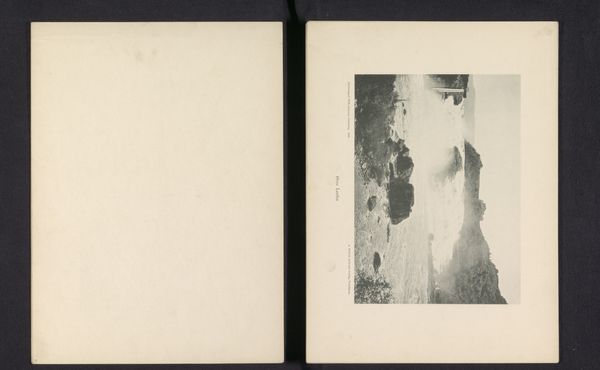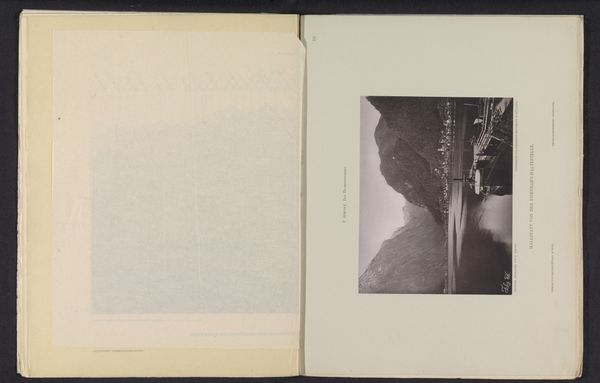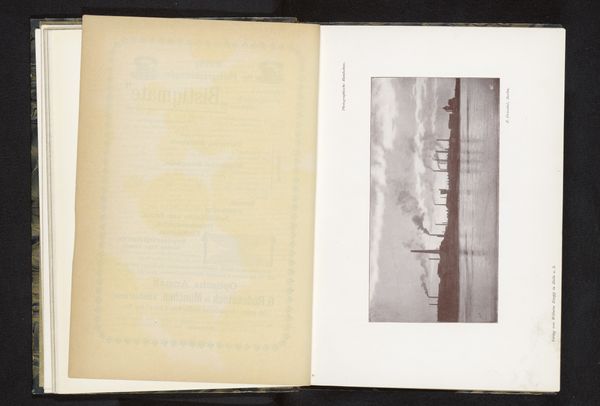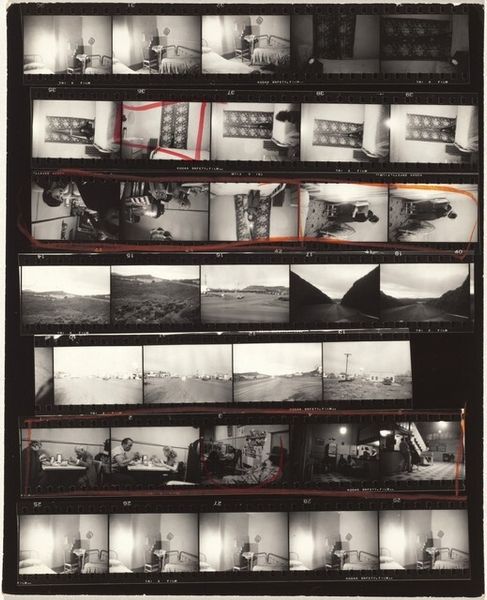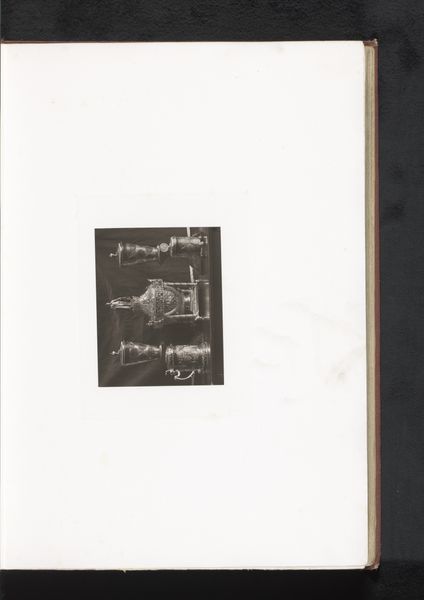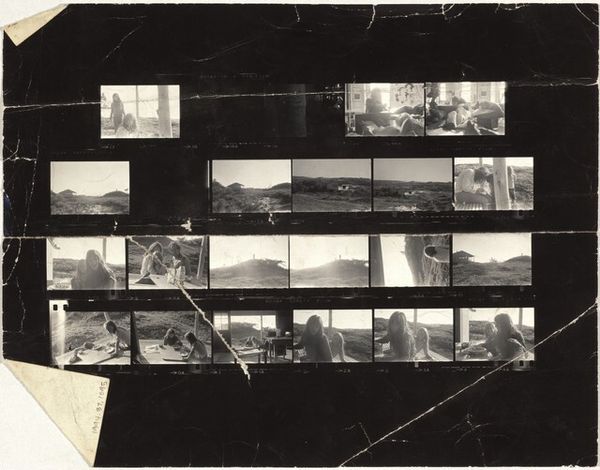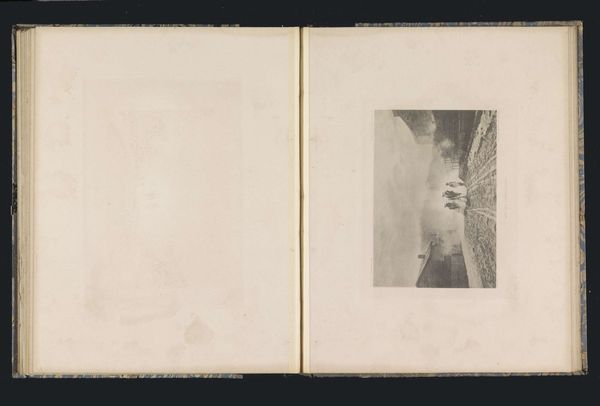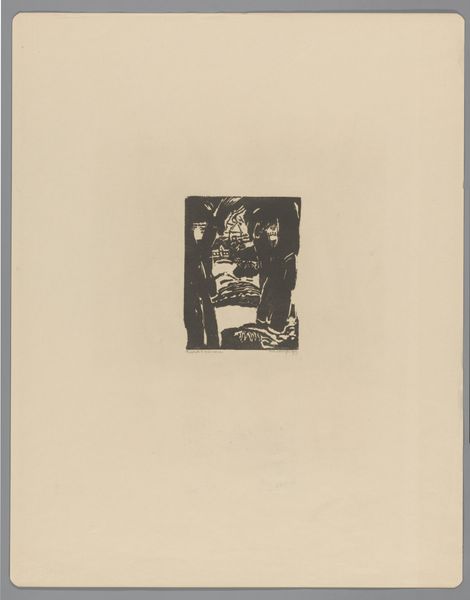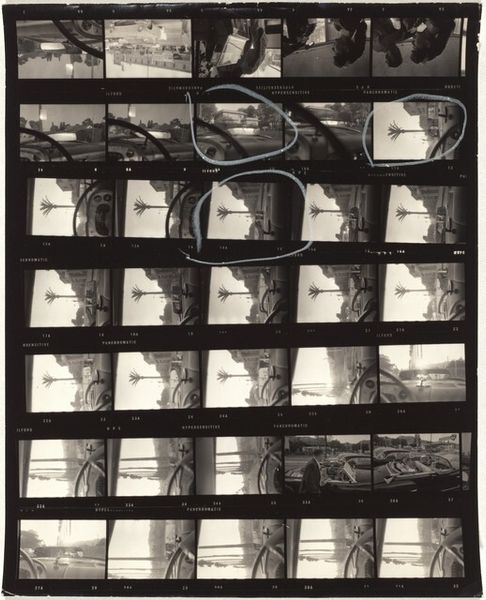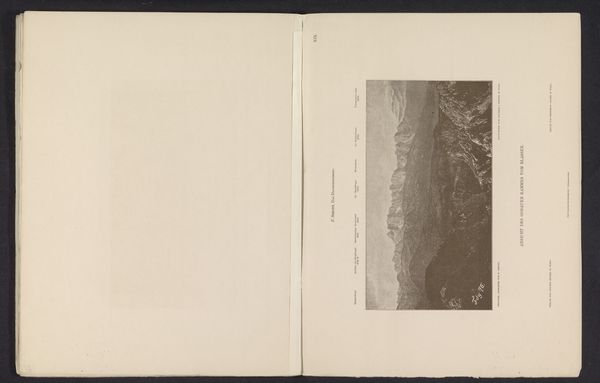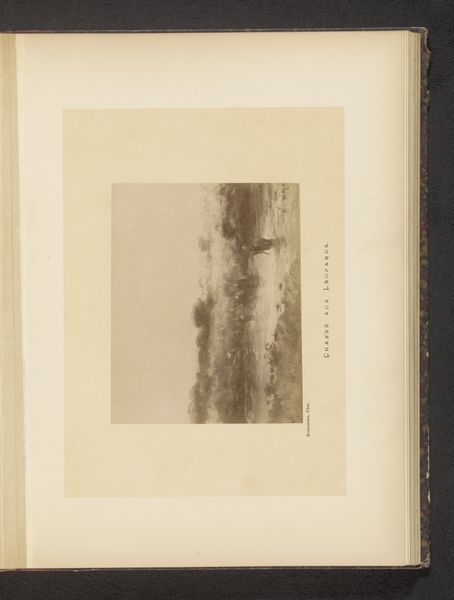
Gezicht in de Black Canyon of de Grand Canyon, Verenigde Staten, vanuit een vliegtuig 1936
0:00
0:00
photography, gelatin-silver-print
#
landscape
#
photography
#
gelatin-silver-print
#
realism
Dimensions: height 152 mm, width 220 mm, height 315 mm, width 272 mm
Copyright: Rijks Museum: Open Domain
Curator: Here we have a gelatin silver print from 1936 titled "Gezicht in de Black Canyon of de Grand Canyon, Verenigde Staten, vanuit een vliegtuig," which translates to "View of the Black Canyon or the Grand Canyon, United States, from an airplane." Editor: It’s immediately striking—the interplay of machine and landscape, the canyon almost dreamlike through the plane’s propeller. There is something really compelling in that juxtaposition of the technological progress, the machinery and this natural wonder, a deep gorge seemingly untouched by time. Curator: Yes, the image beautifully captures that tension. Consider what the airplane symbolized in the 1930s, not just technological advancement, but power and freedom. It contrasts powerfully with the image of the canyon—for millennia a place of spiritual importance for indigenous populations in this region. The view almost looks post-apocalyptic when framed as "progress." Editor: Exactly! There is that feeling in how the image positions us. We’re looking out at this magnificent landscape through this very modern contraption of travel. Are we invited to consider it, dominate it, possess it? It opens a lot of questions about humans’ relationship to the natural world and to history. Curator: I agree, and think the black-and-white medium emphasizes the timeless, even primordial nature of the scene below, the engine an awkward gate to the vista, which speaks of geologic spans of time that are hard to grasp in modernity. Editor: Right, and let us not forget, of course, whose lands those canyons belong to. Indigenous communities' displacement is inseparable from this era of "progress", from the colonial mindset. This landscape represents much more than geological wonder, the layers of the land, a metaphore of history of human exploitation. Curator: Very insightful points. I am reminded, as well, of the enduring symbol of the engine itself, like a guardian keeping us separated but also allowing us to perceive something grand that, perhaps, from below we couldn't otherwise conceive. Editor: For me it underscores the need to reflect on whose perspective matters in defining these historical moments and whose experiences are obscured or ignored when capturing nature as landscape, and freedom through flying. Curator: Looking at it this way, it invites more of us to contemplate. Editor: Precisely. We're invited to keep that conversation going.
Comments
No comments
Be the first to comment and join the conversation on the ultimate creative platform.
